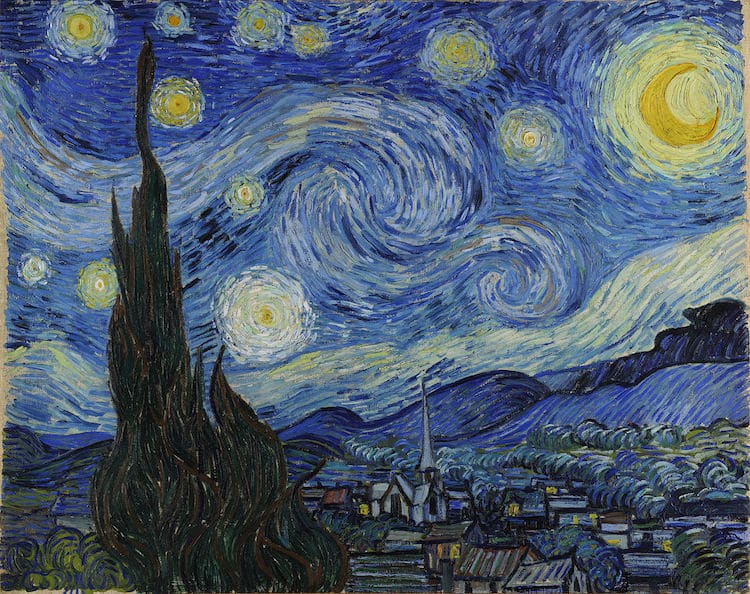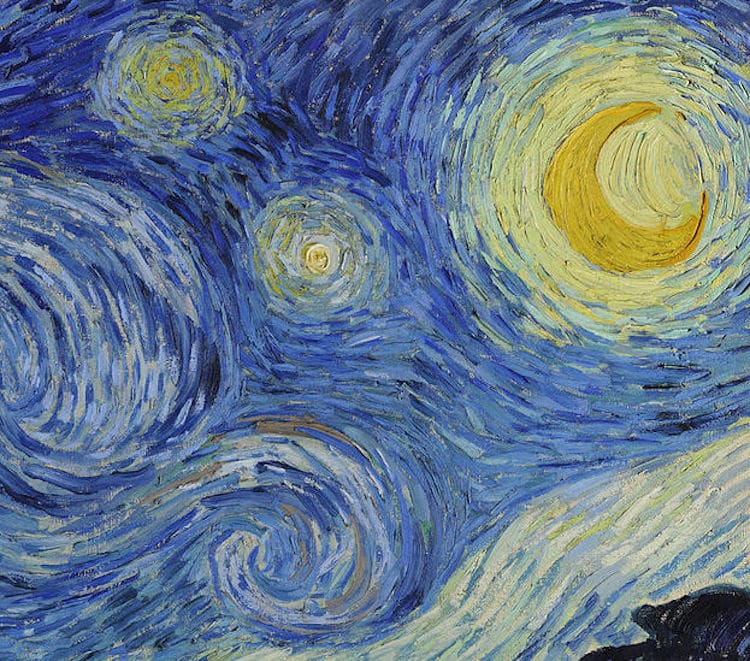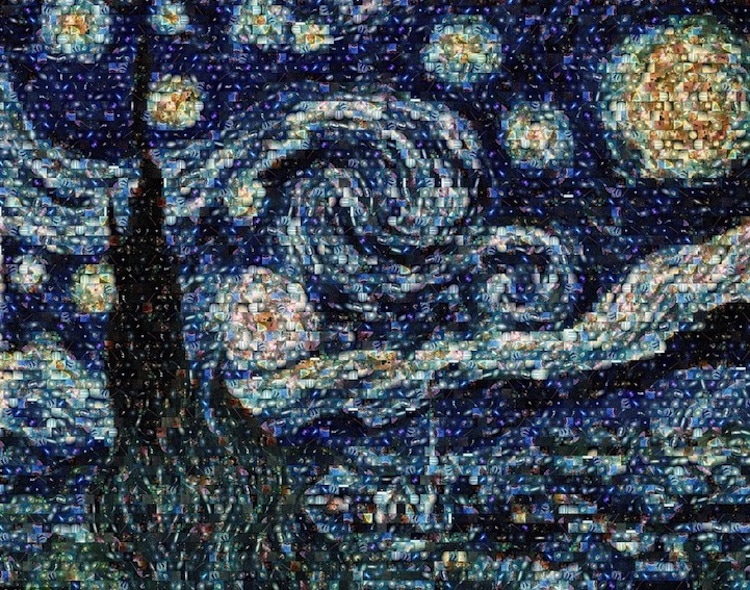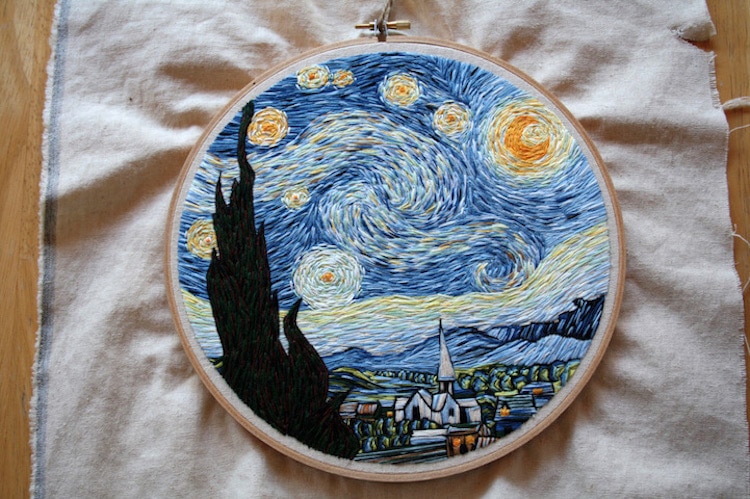Art Historians Have Asserted That Van Goghs Work Was the Epitome of Postimpressionism True False
How Van Gogh's 'The Starry Night' Came to Be and Continues to Inspire Artists

Vincent van Gogh, "The Starry Dark," 1889 (Photo: Public domain via Wikimedia Commons )
This mail may contain affiliate links. If you lot brand a buy, My Mod Met may earn an affiliate committee. Please read our disclosure for more than info.
With a well-known and universally adored body of work, Vincent van Gogh is arguably one of the virtually iconic artists of all time. As a pioneering Postal service-Impressionist figure, Van Gogh paved the way for other avant-garde artists and played a central role in the evolution of modern art.
Amid his many world-famous paintings, The Starry Night (1889),a piece produced late in the artist's exceptionally short career, has a especially important identify in art history. To understand its profound impact, one must explore the context, content, and influence of this magical masterpiece that has an estimated worth of over $100 million.
The Meaning of Starry Dark
According to his letters to Theo, Van Gogh largely regarded The Starry Night every bit a "failure"—alluding in particular to the imagined portions of information technology, which were such a departure from his usual mode of painting.
Even so, the painting is often seen as having slap-up emotional depth. For case, unlike many of the paintings Van Gogh was producing at the time, the color palette of The Starry Night is significantly darker, even recalling some of his first pictorial attempts. Art historians unremarkably attribute this to his depressive state. Yet, in spite of the night blues, Van Gogh includes bright yellow-white stars and a crescent moon.
So, what is the meaning of The Starry Nighttime? Although at this point Van Gogh had largely given upwards his religious behavior, he carried a deep love for the natural world, wherein he found solace. "Hope is in the stars," the artist wrote to his brother. For this reason, The Starry Dark painting is oft interpreted every bit having a hopeful bulletin.

Brushstrokes detail
Rendered in the artist's feature, Post-Impressionist style, The Starry Night features short, painterly brushstrokes, an artificial colour palette, and a focus on luminescence. This artistic approach is particularly evident in the heaven, which is composed of a thickly applied tonal collection of blue and gold hues. It's this handling that helps to explain why it became and so famous.
The ethereal painting'southward balanced composition is equanimous of celestial swirls, stylized stars, a radiating moon, an idyllic hamlet, and a heaven-high cypress tree. While the delineation is based on his real-life view of the village, Van Gogh took some liberties when painting it—a notable fact, as the Dutch artist was known for faithfully painting what he saw before him.
The heaven of The Starry Dark is the most dream-like element to the composition. There, Van Gogh seems to convey turbulent emotion, specially in the swirls that movement beyond the canvas. The hamlet, including the prominent church spire (which is thought to exist inspired by the architecture of his home in the netherlands) is also entirely imagined.

The view from Van Gogh's room (Photo: MoMA)
Additionally, equally Van Gogh painted this piece from his room in the asylum, he opted to remove the prison-like bars from his window, illustrating his idealized approach to the painting and, perhaps, his longing to be free.
Leading Upward to The Starry Night

Vincent van Gogh "Starry Nighttime Over the Rhone," 1888 (Photograph: Public domain via Wikimedia Commons)
On pinnacle of his revolutionary oeuvre, Van Gogh is known for his profound struggles with mental affliction. Born in 1853, the artist was only 37 years sometime when he died of a possibly self-inflicted gunshot wound while being voluntarily treated at a mental health facility in the South of French republic.
While committed, he completed an unprecedented amount of artwork. Somewhen, the 150 pieces produced during this time would be compiled into theSaint-Paul Asylum, Saint-Rémy series, which includes important canvases like his Cocky-Portrait with a Bandaged Ear,The Irises , Wheat Field with Crows (his last painting),and Starry Night Over the Rhône—a piece that undoubtedly inspired The Starry Night.
Van Gogh paintedStarry Night Over the Rhône in 1888—but one year earlier he completed The Starry Night. During this fourth dimension, he was living in Arles, an idyllic French commune. Though rendered in vibrant brushstrokes and expressive colour, the scene is calm; "two colorful figurines of lovers in the foreground" are the simply people nowadays in the painting, and the star-filled sky evokes a feeling of placidity.
BothStarry Night Over the Rhône andThe Starry Night feature like field of study matter and are rendered in Van Gogh's signature style. However, they drastically differ in context. Starry Night Over the Rhône was painted almost Van Gogh's charming home in Arles; the sweeping view featured in The Starry Night was captured from his window in the asylum.
While committed, Van Gogh painted this panorama on several occasions. The Starry Night, still, is the just nocturnal study of the view. Thus, in improver to descriptions axiomatic in the myriad of messages he wrote to his blood brother, Theo, it offers a rare nighttime glimpse into what the artist saw while in isolation. "Through the iron-barred window I tin make out a foursquare of wheat in an enclosure," he wrote in May of 1889, "higher up which in the morning I see the lord's day rise in its glory."
The Starry Night'due south Lasting Influence
Currently housed past the Museum of Modern Art in New York City, The Starry Nighthas touched and inspired many people since its conception. In fact, some contemporary artists have even reproduced the iconic piece using original materials. These unique media include:
Common salt and Spices
Jelly Beans
Doorknobs
Photographs taken by the Hubble Space Telescope

Torn Newspaper
Embroidery

Similarly, some artists have replicated the painting on unconventional canvases. These include:
An Eggshell
A Pumpkin
An Etch-A-Sketch
And even eyelids!
The Starry Night continues to resurface in new ways in the modern world.
With each passing yr, it seems as though The Starry Night is reaching more and more fans and inspiring new generations of artists. Today, the renowned work of fine art is a must-have visual for art lovers, whether that's in the form of a beautiful wall hanging, an inspiring decal, or a quirky toy.
Van Gogh Action Figure
Decorative Decal
Charming Mug
Artsy Pillow
Center-Catching Candle
Unique Wall Hanging
Museum Collection Puzzle
Luminous Umbrella
Ultimately, given its fascinating context, poignant history, and original aesthetic, it's no wonder that The Starry Night has had such a transcendent touch on the globe of art and, equally, on the world as a whole.
This article has been edited and updated.
Related Articles:
Handmade Candles Capture the Enchanting Glow of Van Gogh's Famous Paintings
Cute Van Gogh Notecards Let You Channel the Artist's Dear of Letter-Writing
This Showroom Gives Visitors the Experience of Stepping Inside Van Gogh's Paintings
Source: https://mymodernmet.com/starry-night-van-gogh/